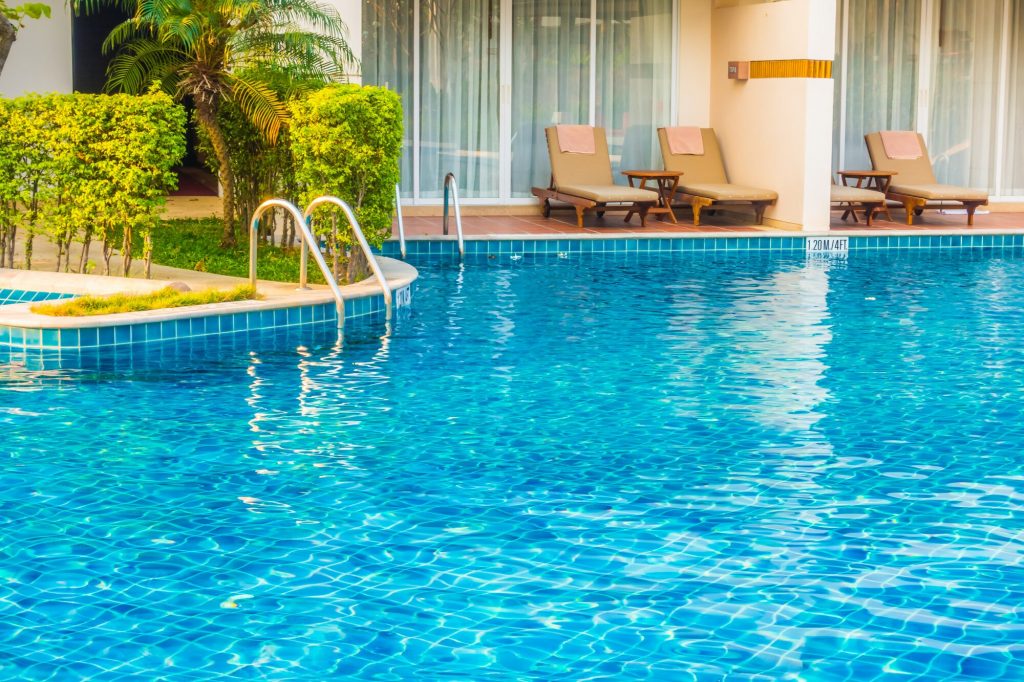Swimming Pool Maintenance: A Comprehensive Guide For A CPO Certified Pool Operator

Having a swimming pool on your property can be an addition offering a relaxing oasis for both leisure and recreation. However it’s important to prioritize maintenance in order to reduce risk for you or your facility, protect the swimmer, as well as protect your pool. Swimming pool maintenance involves a series of tasks aimed at ensuring water, maintaining the integrity of the pool structure and creating an environment for swimmers. In this guide we will explore the aspects of swimming pool maintenance covering everything from managing water chemistry to taking care of structural upkeep.
Understanding Water Chemistry
Maintaining the balance of chemicals in your pool water is crucial for providing an enjoyable swimming experience. There are parameters that need to be monitored;
PH Levels
The pH level of your pool water should ideally fall within the range of 7.2 to 7.8. This ensures that the water is neither overly acidic nor excessively alkaline, which helps prevent irritation to swimmers eyes and skin.
Chlorine Levels
Chlorine plays a role in disinfecting and eliminating unwanted contaminants like bacteria from your pool water. Regular testing is necessary to maintain chlorine levels within the recommended range of 1.0 to 4.0 parts per million.
Alkalinity
Alkalinity acts as a buffer for pH levels preventing fluctuations that can be harmful to swimmers comfort and safety. The recommended range for alkalinity falls between 80 and 120 parts, per million.
Maintaining the Appropriate Calcium Levels
Keeping the calcium hardness, within the range of 200 to 400 parts per million is essential to prevent problems like corrosion or scale formation. It is crucial to monitor and adjust the calcium levels to ensure the integrity of your pool.
Skimming and Surface Cleaning
Maintaining a clean pool surface not enhances its appeal but also prevents the accumulation of debris that can affect water quality. Regular skimming helps remove leaves, insects and other floating debris. Additionally using a pool vacuum to clean the floor and walls is necessary to prevent algae growth and maintain water clarity.
Maintenance of Pool Filters
Pool filters play a role in trapping impurities and ensuring water circulation. There are three common types of filters or filter media; sand, cartridge and diatomaceous earth (DE). Regular cleaning and maintenance are necessary for these filters to prevent clogs and optimize filtration efficiency.
Sand Filters
To maintain sand filters it is important to perform backwashing, which involves reversing water flow to flush out accumulated debris. The frequency of backwashing should be determined based on pressure gauge readings.
Cartridge Filters
Cartridge filters require cleaning by removing them from the system and hosing them down thoroughly. Depending on usage, replacement may be necessary, after a lifespan.
DE Filters
DE filters involve the addition of earth powder to coat the filter grids. It is important to backwash and recharge these filters with DE in order to maintain their effectiveness.
Maintaining Proper Water Circulation
Ensuring water circulation is crucial for chemical distribution and preventing stagnant areas. Regularly inspecting and cleaning the pool pump as ensuring its efficient functioning are vital steps. Adequate circulation also helps prevent the formation of spots where debris and algae can accumulate. Water circulation requirements are regulated by the Department of Health. To learn about the requirements you want to take a CPO Certification course in your state. If you live in New York you can take it here at CPO Certification New York.
Inspection and Maintenance of Pool Equipment
A maintained pool relies on the functioning of various equipment components. It is essential to inspect and service the pool pump, heater and other equipment parts. Lubricating moving parts checking for leaks and promptly addressing any issues can significantly extend the lifespan of pool equipment.
Monitoring and Maintaining Water Levels
Maintaining the water level is often. Plays a critical role in effective skimming and filtration processes. During periods of rainfall or excessive evaporation it is important to adjust the water level. This ensures that the skimmer operates efficiently while also preventing damage to the pool pump.
Preventing and Treating Algae Growth
Algae growth can quickly transform a pool into a mess. Regularly brushing the walls and floor of the pool helps prevent algae from forming. In situations where algae have already taken hold it may be necessary to use shock treatment or algaecides to get rid of the infestation.
Preparing the Pool for Winter
For those residing in regions preparing the pool for winter is a step in preventing damage caused by freezing temperatures. This involves reducing the water level draining pipes and equipment and adding chemicals to safeguard the pool during the off season.
Conclusion
Maintaining a swimming pool involves tasks and occasional inspections. By being trained, knowledgeable and having a CPO Certification will make you proactive in addressing issues promptly. Your pool will stay risk free, protected, and swimmer safe and inviting retreat. Whether you have a Hotel, RV Park, Campground, HOA, YMCA with a pool or just a new owner following some of these CPO Certification guidelines will help you navigate the complexities of swimming pool maintenance and ensure that your pool remains a source of happiness for years to come.






